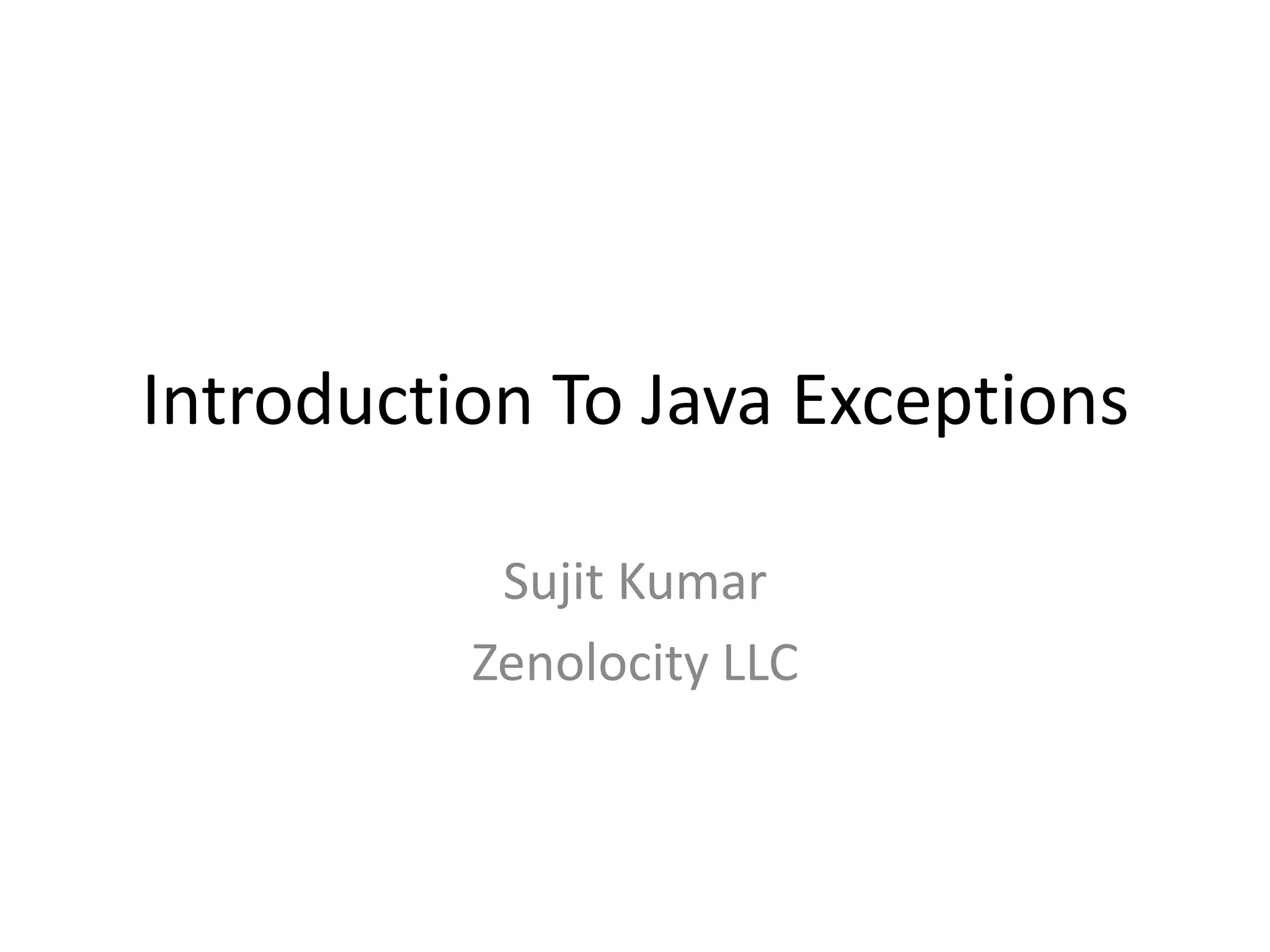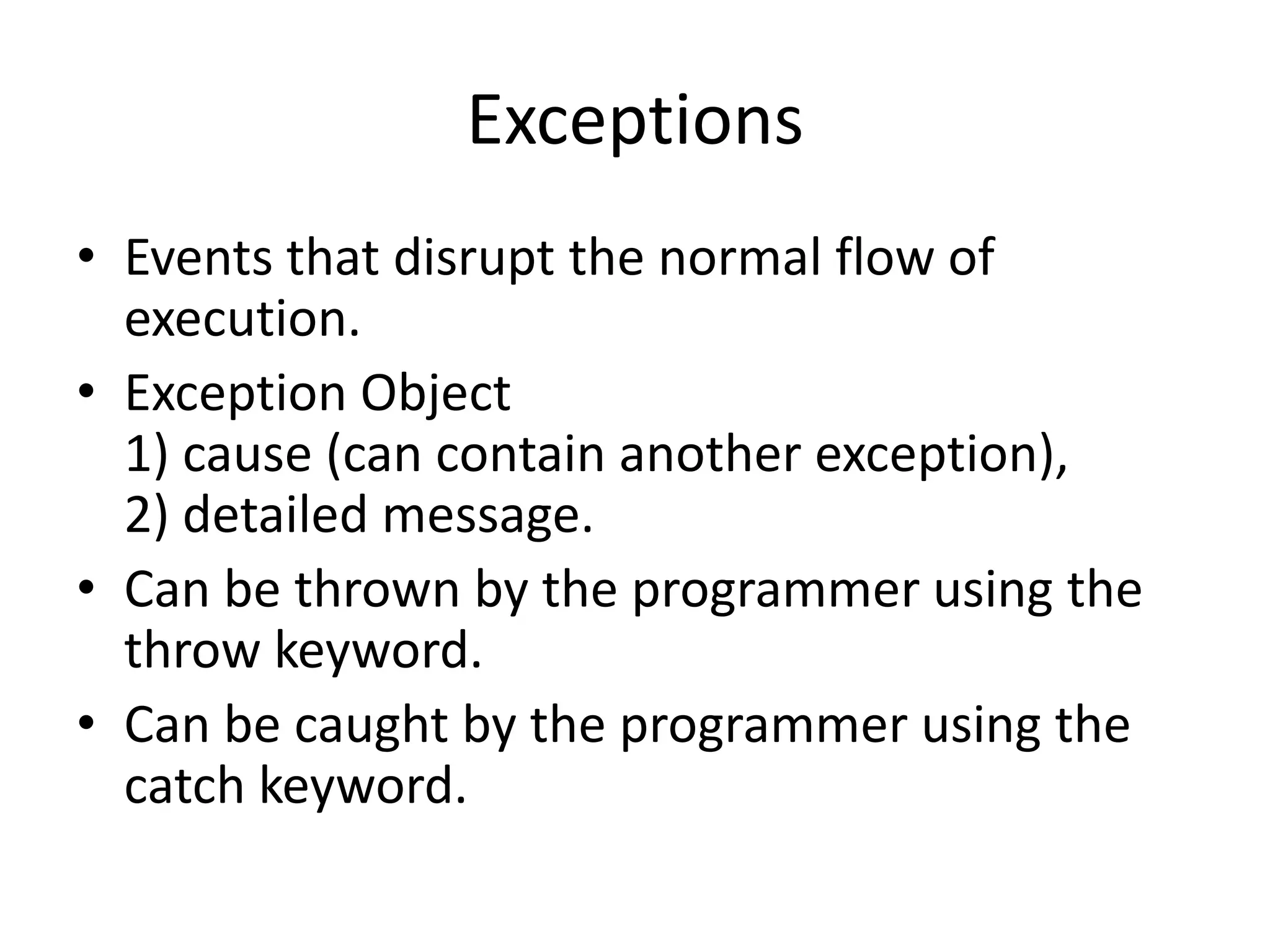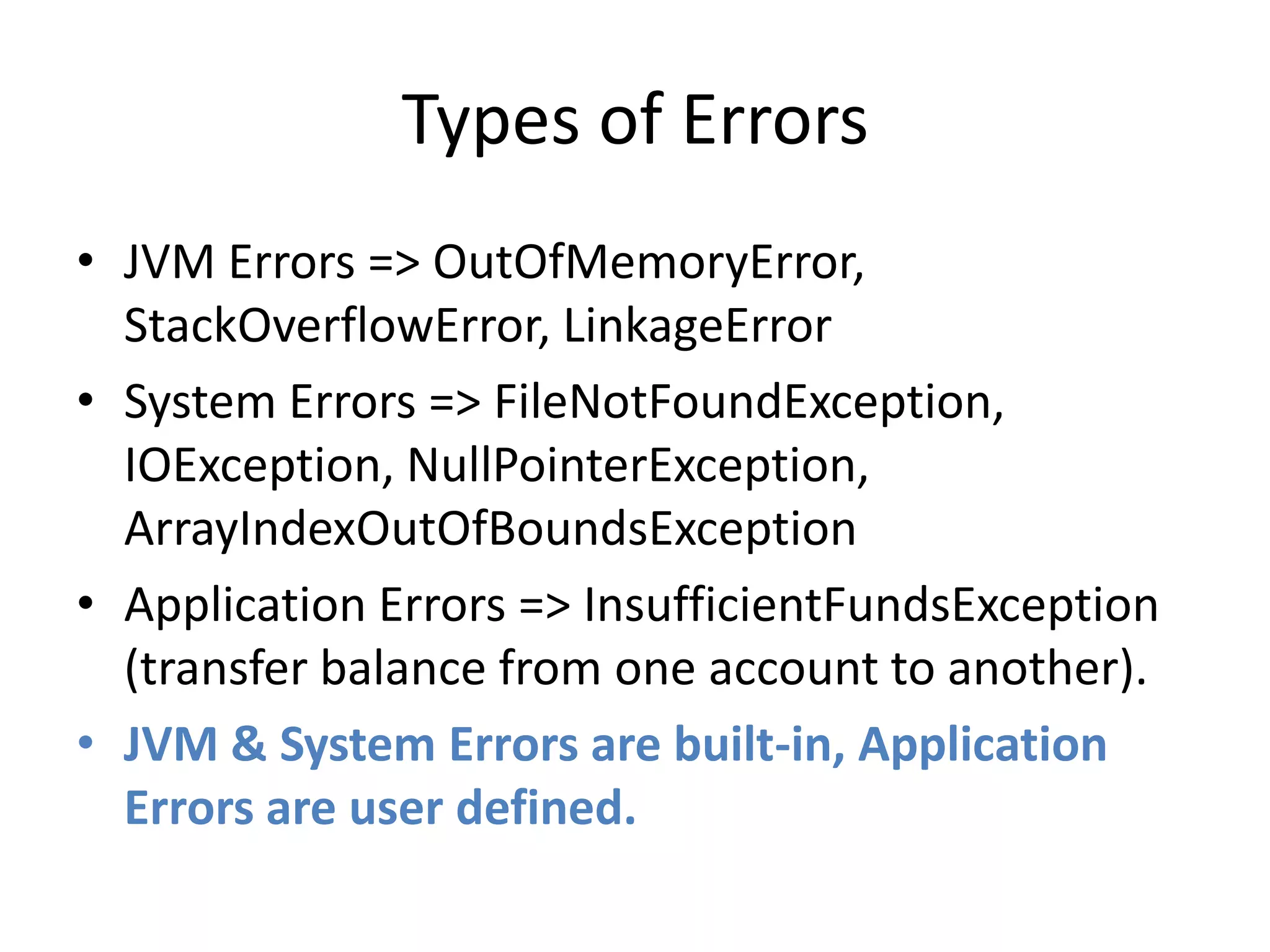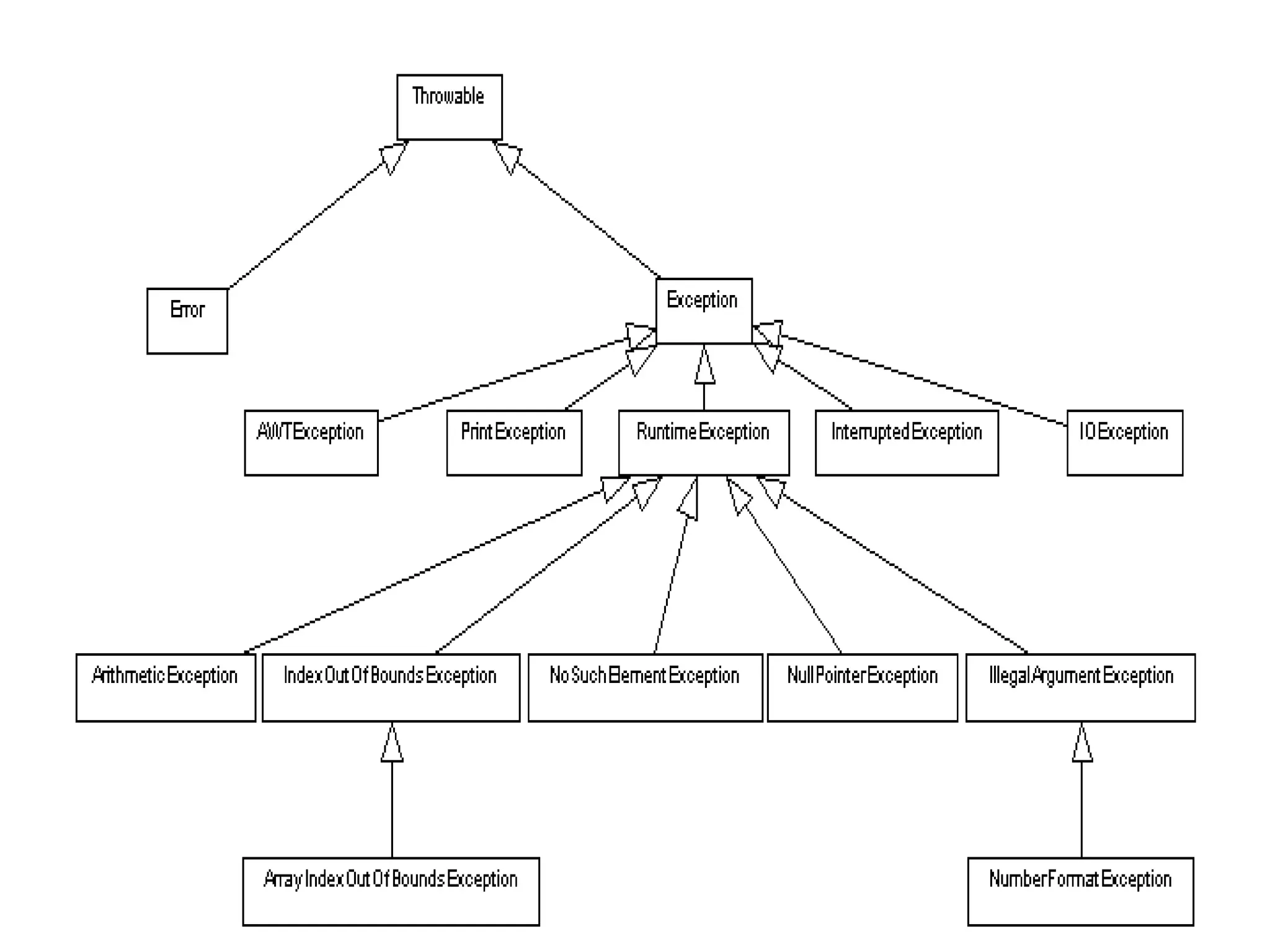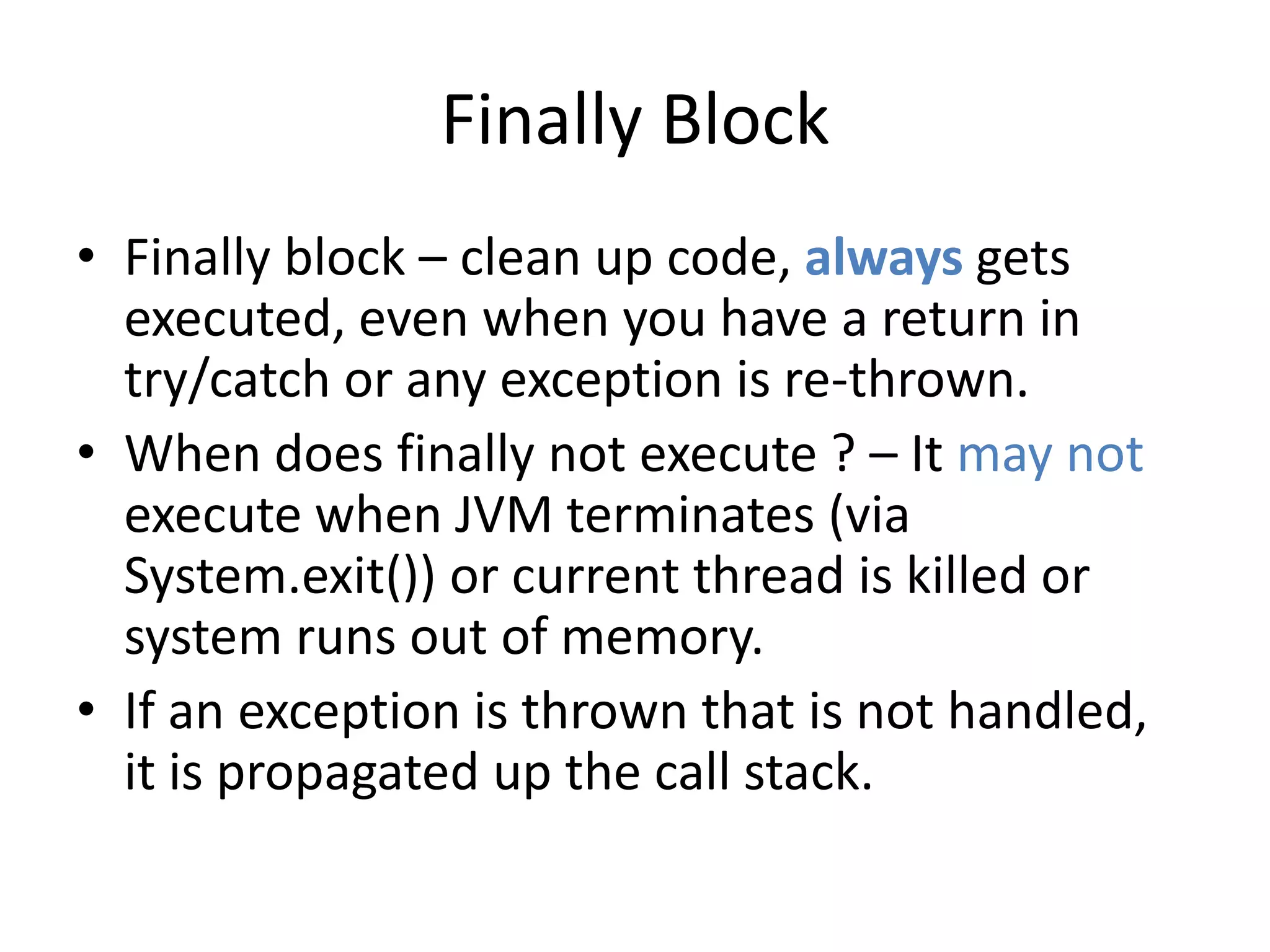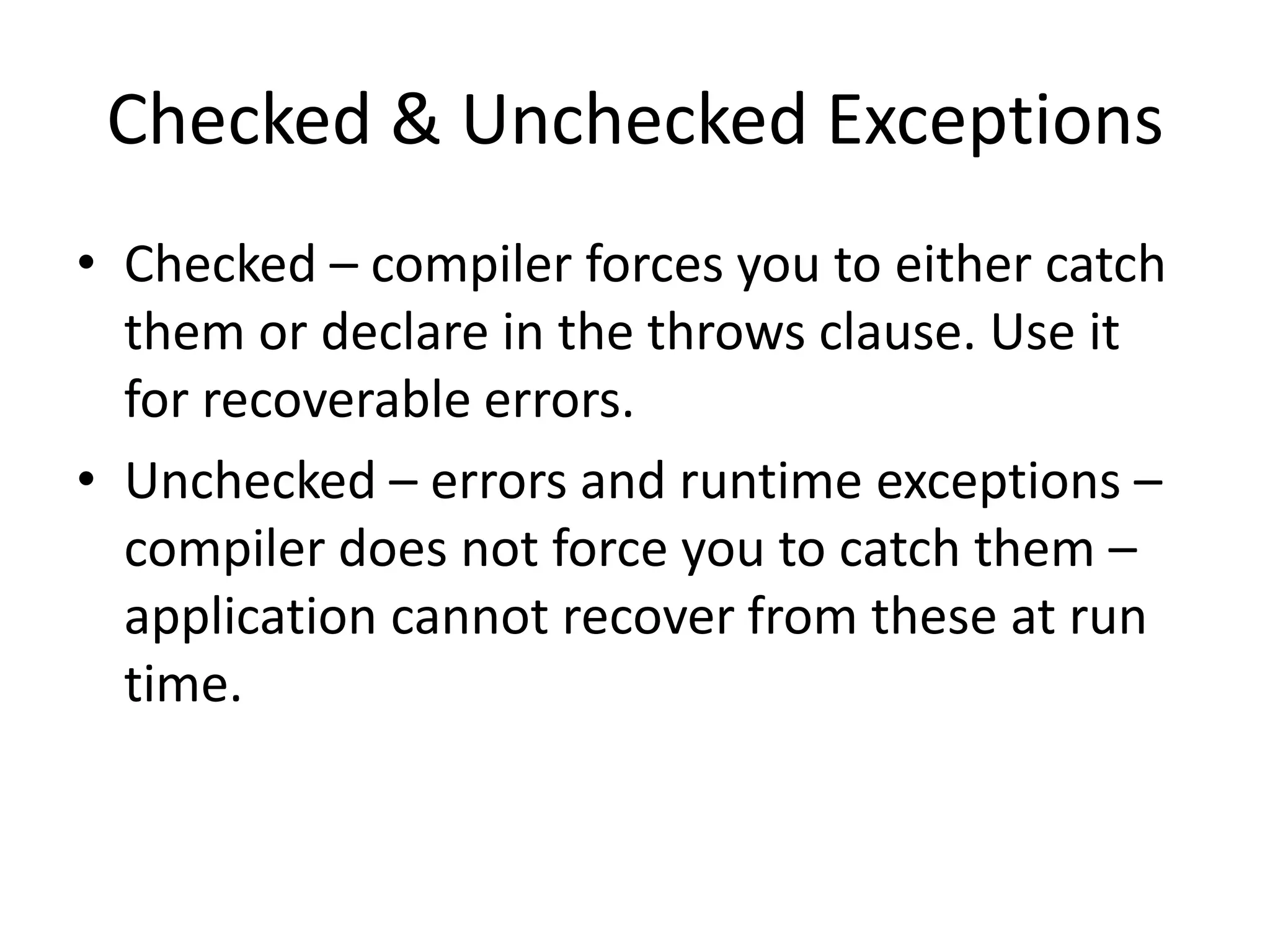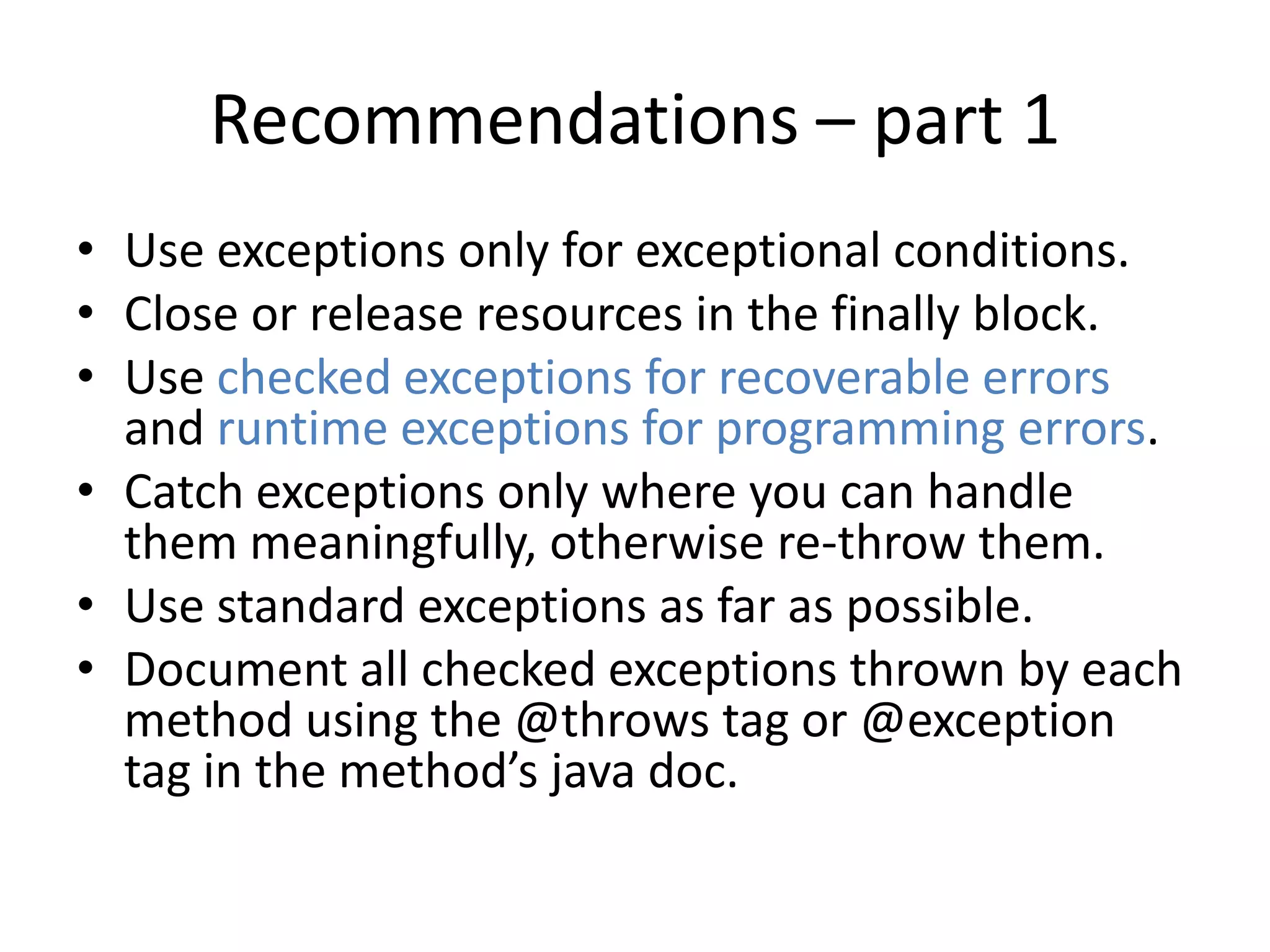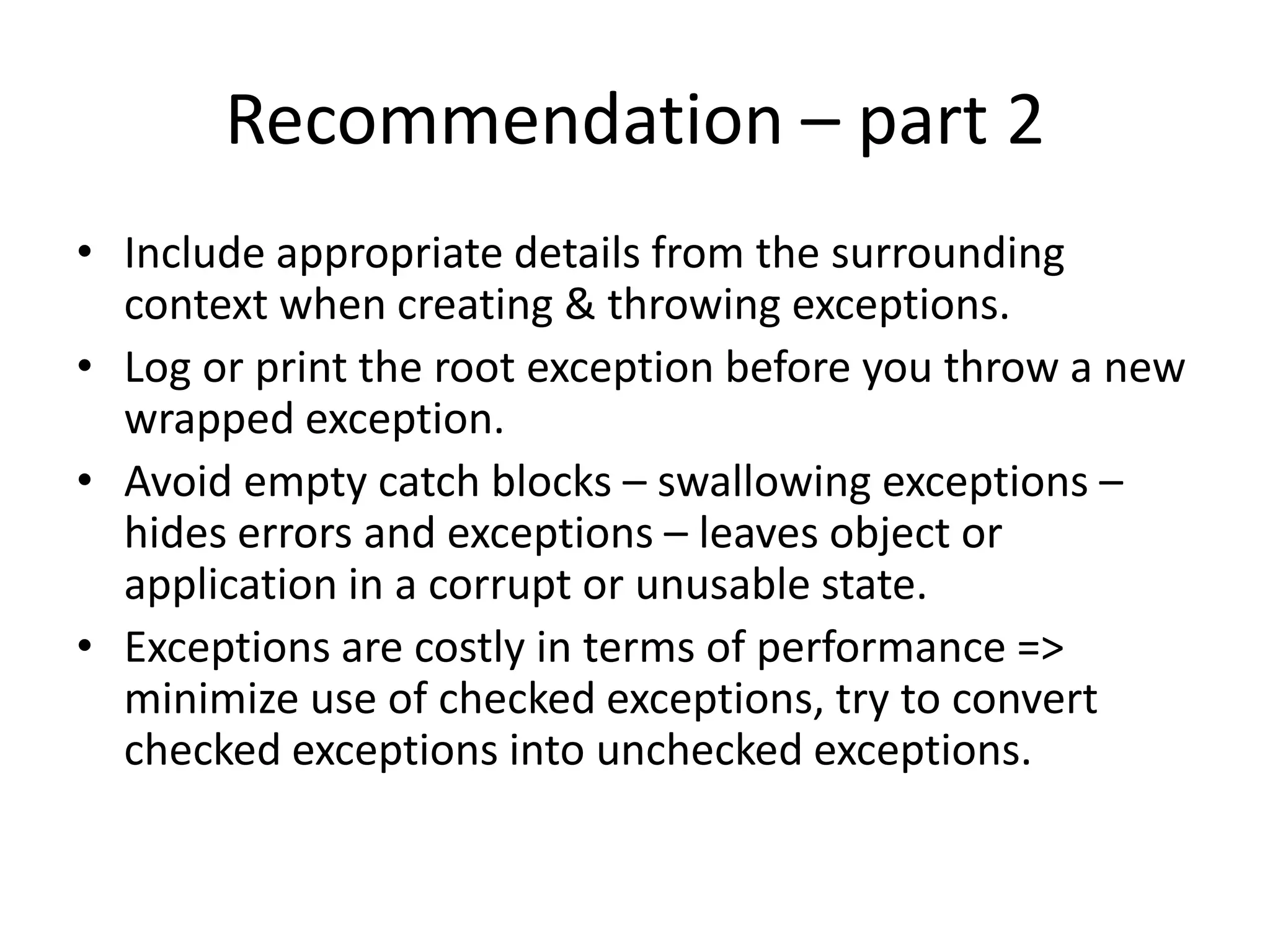This document provides an introduction to Java exceptions. It discusses what exceptions are, how they are handled using try/catch blocks, and the different types of exceptions including checked, unchecked, and user-defined exceptions. It also covers exception handling best practices such as only catching exceptions where they can be meaningfully handled, using the finally block to close resources, and avoiding empty catch blocks.
